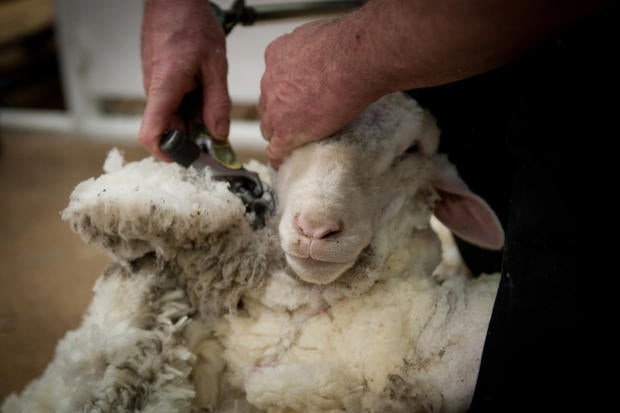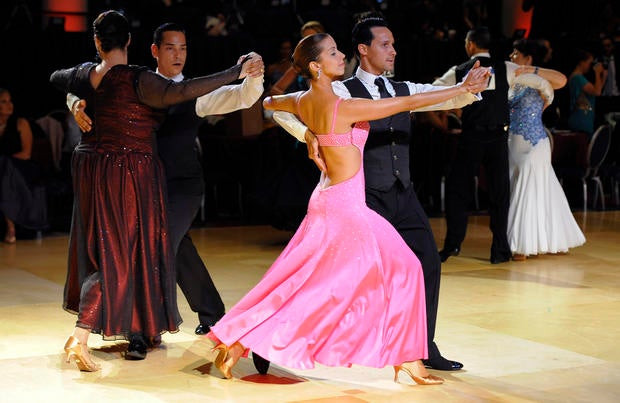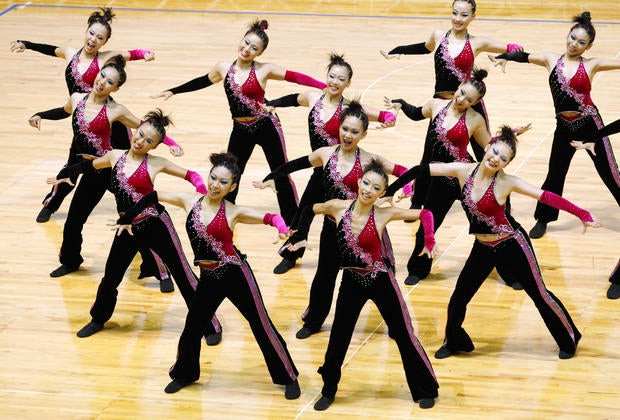Pole vaulting has been an admired Olympic event since 1896, showcasing incredible athleticism and skill. But what about pole dancing? Could this captivating dance form twirl its way into the Olympic Games? While it might raise eyebrows, the idea isn’t entirely out of step.
Last year, the Pole Fitness Association launched petitions to advocate for pole dancing’s inclusion in the 2012 Summer Olympics. However, the International Olympic Committee (IOC), perhaps viewing it as more Moulin Rouge than Melbourne, didn’t grant it a spot. Yet, the passionate campaign continues, fueled by the growing recognition of pole dancing as a legitimate and demanding physical discipline.
For many, pole dancing might still evoke images of dimly lit clubs. However, in reality, it’s increasingly found in fitness studios worldwide. Often rebranded as “pole fitness” or “vertical dance,” this sensual art form has blossomed into a recognized workout, boasting over 500 studios across the United States alone.
Anjel Dust, a key organizer at the California Pole Dance Championships, highlighted this evolution in a LA Weekly interview stating, “Nowadays there are very few who are training to perform in a strip club. It’s all about fitness or competitions. There is no longer the stigma. I think pole dancing is being seen more as an art form.”
While Anjel Dust’s perspective rings true within the pole dancing community, the IOC remains unconvinced. Pole dancing, shadowed by its past association with nightclubs and a provocative image, has been actively lobbying for Olympic acceptance for several years. Beyond a simple name change, pole fitness, or vertical dancing, might need to further refine its image to align with the family-friendly atmosphere of the Olympic Games.
Olympic Dreams: Unconventional Sports Eyeing the Games
The world of sports is constantly evolving, and the Olympics, while steeped in tradition, occasionally welcomes new disciplines. Beyond the established events, a fascinating array of sports are vying for a coveted spot in the Olympic program. Let’s explore some of these unlikely contenders, each with its unique appeal and Olympic aspirations.
 Sheep Shearing at Golden Shears
Sheep Shearing at Golden Shears
Sheep Shearing: From Farm to Olympic Field?
When you think of grace, power, and precision, Olympic gymnastics might spring to mind. But consider sheep shearing. The Golden Shears, the organizers behind the world’s largest sheep shearing and wool handling contest, certainly do.
The Golden Shears website proclaims, “Shearing has progressed from being a physically demanding and arduous farm task to being recognized as an elite sporting pursuit. There is something truly magical and inspiring watching the strength, grace, power and precision of an open shearing final.”
According to the Associated Press, a New Zealand farm lobby group believes sheep shearing possesses the potential to become an Olympic demonstration sport. The New Zealand Federated Farmers asserted earlier this year that “the time has come to elevate shearing’s sporting status to the ultimate world stage,” emphasizing that top shearers are “athletes who take it to another level.”
New Zealand is a powerhouse in sheep shearing, and the Golden Shears event garners significant media attention within the country. Other nations with strong shearing traditions include Ireland and Australia.
When New Zealand hosted the world shearing championships in March, Jeannette Maxwell, Federated Farmers Meat and Fiber chairwoman, deemed it the opportune moment for the sport to push for broader international recognition.
“One way would be to make shearing a demonstration sport at a Commonwealth Games, if not, the Olympics itself,” she suggested. If the IOC remains deaf to the pleas of Federated Farmers Meat and Fiber, one wonders who they will listen to.
Olympic Dreams: Unconventional Sports Eyeing the Games
 Yoga Olympic Competition
Yoga Olympic Competition
Yoga: From Spiritual Practice to Olympic Podium?
Yoga, often associated with spiritual discipline and focused meditation, might seem an unlikely candidate for Olympic competition. Yet, Rajashree Choudhury, founder of USA Yoga, shared with the Associated Press her vision of yoga asana, or posture, competition becoming an Olympic sport.
Choudhury clarifies that the Olympic focus would be on the physical poses, not the mystical aspects of yoga. “I’m not trying to measure anybody’s ‘eight states,'” she explained, referring to the meditative and spiritual dimensions of yoga practice. “The posture can be competitive.”
Participants in the National Yoga Asana Championship, organized by USA Yoga in March, were tasked with performing a sequence of seven yoga poses within three minutes. Five poses were mandatory: standing head-to-knee pose, standing bow-pulling pose, bow pose, rabbit pose, and stretching pose. Competitors then had the freedom to select the final two poses.
These poses, according to Choudhury, showcase “how someone can have perfect strength, balance, flexibility in the body.”
Yoga pose competitions are already established in India, yoga’s birthplace, and in various locations around the globe. Choudhury herself participated in these competitions during her upbringing, as did her husband, Bikram Choudhury, the creator of Bikram Yoga, a style of hot yoga involving a series of 26 poses performed in a heated room.
She believes that competitions can attract individuals to yoga who might be hesitant due to its spiritual connotations, by highlighting its athletic and physically demanding side.
Olympic Dreams: Unconventional Sports Eyeing the Games
 Ballroom Dancing Competition
Ballroom Dancing Competition
Dancesport: Ballroom Dancing Steps into the Spotlight
What do Olympic gold medalists Kristi Yamaguchi and Shawn Johnson share beyond their athletic prowess? They both captivated American audiences as champions on “Dancing with the Stars.” Olympian Evan Lysacek also demonstrated his dancing skills, securing second place on the show. This intersection of Olympic achievement and dance floor success naturally begs the question: should competitive ballroom dancing, now known as dancesport, be a serious contender for Olympic inclusion?
The answer is a resounding yes, according to the dancesport community. The term “dancesport” itself was intentionally coined to emphasize the athletic rigor of ballroom dancing and strengthen its Olympic bid. After persistent lobbying, the International DanceSport Federation (IDSF) achieved IOC recognition as the official governing body for the sport in 1997. However, despite this milestone, subsequent attempts to incorporate ballroom dancing into the 2008 Beijing Olympics and the 2012 London Olympics were unsuccessful.
Nevertheless, ballroom dancing, or dancesport, is undeniably physically demanding, rivaling many established Olympic sports. As the World DanceSport Federation emphasizes, it possesses all the qualities valued by the Olympic Games: “It has gender parity; it has so far been free of doping, it has a large audience world-wide, venues would be easy to find and the competition could easily be run over two days.”
Considering these compelling attributes, particularly the global popularity fueled by shows like “Dancing with the Stars,” it seems increasingly likely that ballroom dancing, or dancesport, will one day be judged on the Olympic stage. Until that day arrives, we’ll continue to be entertained by the expert judging panels of shows like “Dancing with the Stars,” eagerly anticipating the potential of “Ballroom Dancing Olympics.”
Olympic Dreams: Unconventional Sports Eyeing the Games
 Ballroom Dancing Competition
Ballroom Dancing Competition
Squash: The Healthiest Sport Aims for Olympic Glory
Quick quiz: Which sport was declared “the healthiest” in a 2007 Forbes survey? Running? Swimming? Cycling? Surprisingly, none of the above topped the list.
Squash earned the title of the healthiest sport globally, judged by criteria spanning cardiorespiratory endurance and muscular strength. Squash has been vigorously advocating for Olympic inclusion, but Olympic recognition has remained elusive.
This dynamic, goggle-required sport narrowly missed out on inclusion in the 2012 London Games and hoped to qualify for the 2016 Games, ultimately losing out to golf and rugby sevens.
Undeterred, the campaign to bring squash to the Olympics persists. Beyond its health benefits, squash proponents highlight other compelling arguments. According to squash2016.info, squash boasts global participation (175 countries), affordability (requiring minimal space and equipment), and the unique distinction of having world champions – both men and women – from all five IOC-recognized continents.
These are undeniably strong credentials. The sport even released a compelling video outlining its Olympic qualifications. As the narrator concludes in the seven-minute appeal: “The time is right. And squash is ready.”
Olympic Dreams: Unconventional Sports Eyeing the Games
 Ballroom Dancing Competition
Ballroom Dancing Competition
Cheerleading: Pompoms and Olympic Possibilities
In some ways, cheerleading encounters similar Olympic acceptance challenges as pole dancing. A primary hurdle is the question of whether it even qualifies as a sport. Furthermore, its reputation, particularly in the U.S., sometimes leans towards intense rivalries and off-field drama, occasionally overshadowing the athleticism involved.
The drama surrounding cheerleading can indeed overshadow the sport itself. For evidence, one need look no further than reality television shows focusing on the competitive world of cheerleading and the passionate parents involved.
It is with this complex image that cheerleading aspires to Olympic recognition. The International Cheer Union submitted a formal request for IOC recognition in 2010, but thus far, these efforts have not been successful.
However, it’s crucial not to underestimate the athleticism of elite cheerleaders. They are often exceptional gymnasts and even accomplished track and field athletes. Notably, an Atlanta Falcons cheerleader recently nearly qualified for the Olympics – as a pole vaulter, highlighting the crossover athleticism present in cheerleading.
Will cheerleading ever vault into the Olympics? Perhaps the path is challenging, but certainly not due to a lack of enthusiasm. In its official IOC application announcement, the International Cheer Union stood out as perhaps the most enthusiastic Olympic hopeful, using not one, but two exclamation points!
References
- Pole Fitness Association Petitions for Olympic Inclusion. (2011).
- Dust, A. (2011). California Pole Dance Championships Organizer Interview. LA Weekly.
- Golden Shears Official Website. (n.d.).
- Associated Press. (2012). Sheep Shearing Future Olympic Sport? CBS News.
- New Zealand Federated Farmers Statement on Sheep Shearing. (2012).
- Choudhury, R. (2012). Yoga Poses as Olympic Sport? CBS News.
- USA Yoga National Asana Championship Information. (2012).
- World DanceSport Federation. (n.d.). Dancesport and the Olympics.
- Forbes. (2007). “Healthiest Sport” Survey.
- squash2016.info. (n.d.). Squash Olympic Bid Information.
- squash2016.info. (n.d.). Squash Olympic Bid Video.
- International Cheer Union IOC Application Announcement. (2010).
- Daily Mail. (2012). Cheerleading Murder Plot News.
- Huffington Post. (2012). Cheer Perfection TLC Reality Show Preview.
- Yardbarker. (2012). Falcons Cheerleader Olympic Trials Performance.


